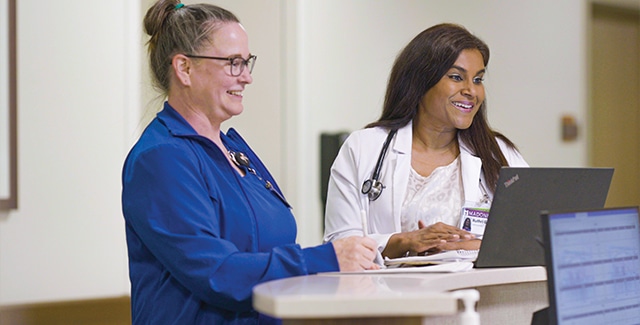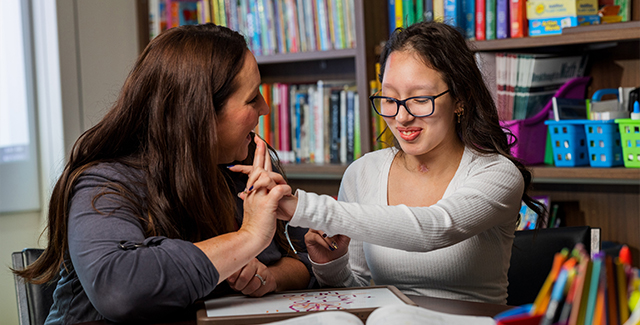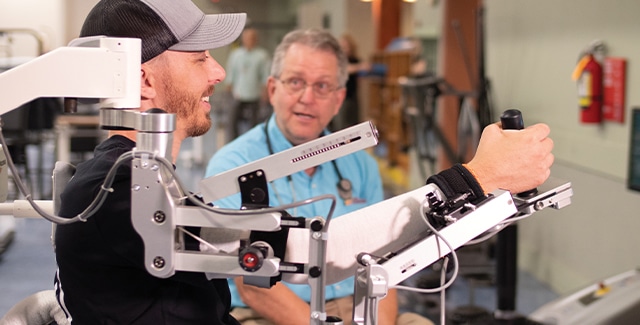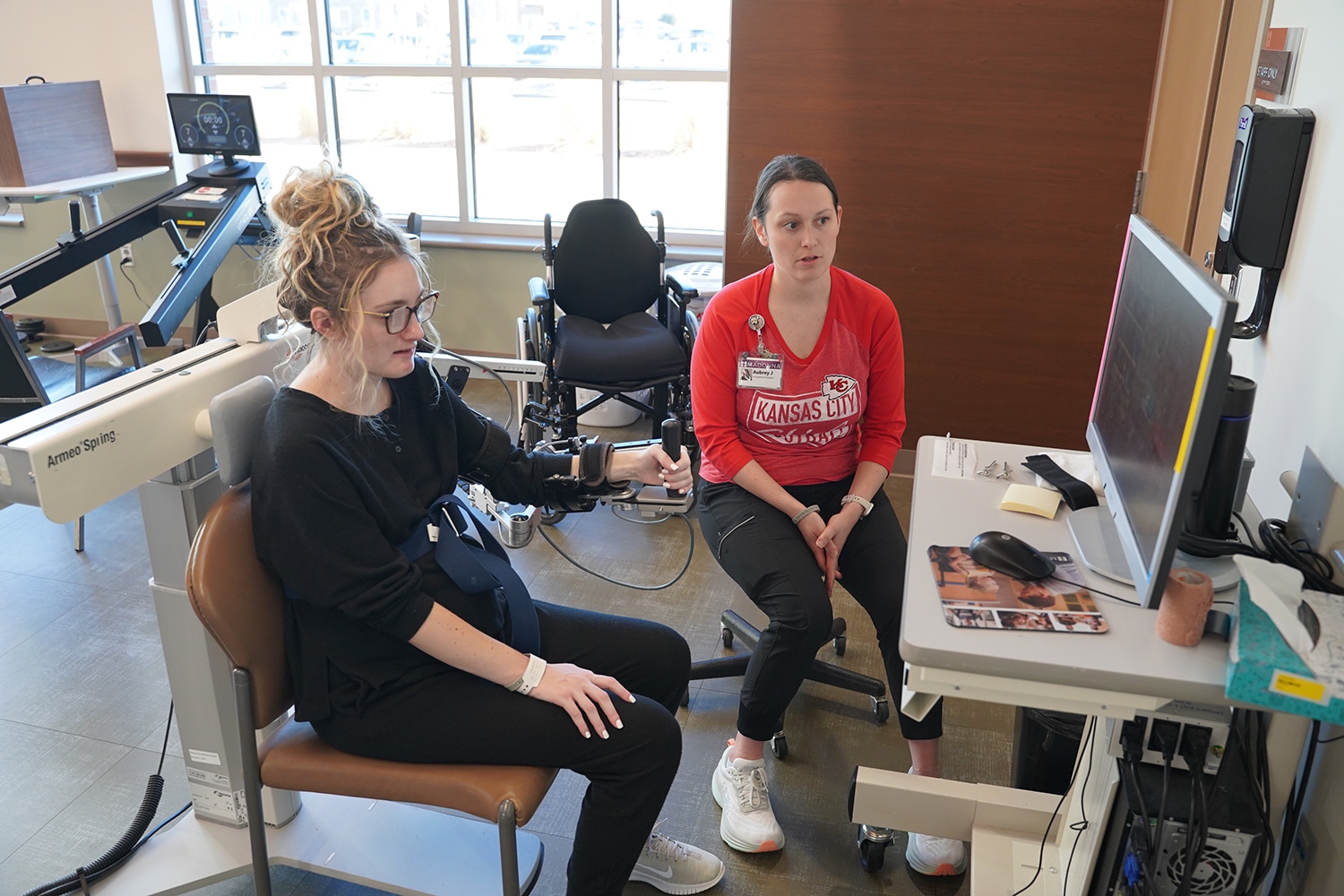Here at Madonna, we help individuals of all ages who have experienced a serious injury or illness return to their life roles. And our expert team of inpatient and outpatient occupational therapists plays a key role in this shared mission. That’s why, in honor of National Occupational Therapy Month, we are happy to shine a light on what these amazing health care professionals do every day.
What is an occupational therapist?
A Madonna occupational therapist empowers patients to re-master activities of daily living.
“All patients who come to Madonna are evaluated and treated by occupational therapists,” Erin Engelman, OTR/L, Madonna’s stroke program leader at the Lincoln Campus, said. “As they go through their [inpatient] stay, we use our clinical judgment in how we tailor their care plan to their specific needs within our scope of practice.”
Engelman added that Madonna’s inpatient occupational therapists help individuals re-learn self-care tasks, such as taking a shower, getting dressed or brushing one’s teeth. Later, when a patient is ready, Madonna occupational therapists may help them re-master the rules of the road with Madonna’s driver re-training program or navigate public environments like grocery stores with community re-integration outings. Meanwhile, a Madonna outpatient occupational therapist may help a student with a disability learn to adapt to the classroom environment, an adult with a neurological condition performs tasks like cooking or doing laundry, or an aging adult experiencing cognitive changes to live at their maximum level of independence possible.
“We work on being able to participate in your daily life roles, whether that’s cooking or cleaning, taking care of your children, or managing your medications,” Engelman said. “We work on vision rehab, cognition, and [fine motor] movement.”
Madonna occupational therapists can also provide in-home assessments to determine the suitability of the current living situation to a patient’s needs and abilities and suggest adaptations when necessary.
Tools of the OT trade: Innovative technology and specially designed spaces
Relearning the basic tasks of everyday living can be a daunting challenge for many Madonna patients. Fortunately, Madonna’s occupational therapists have specialized technology and thoughtfully designed spaces on-site to help maximize recovery and produce the best outcomes for patients as they complete their rehabilitation.
“We have so many treatment options at Madonna,” Engelman said. “We truly are blessed for what we have available to us to use with our patients. Madonna has simulated home environments to work on cooking, cleaning, transfers, and childcare. We also have an array of advanced technologies to focus on specific impairments.”
For example, the Armeo®Power provides customizable robotic assistance for patients with little to no function in their arm(s), while its sister technologies, the Armeo®Spring and the Armeo®Senso, address moderately functioning arms and higher-functioning arms, respectively. All three pieces of equipment are at Madonna. Each one uses a digital library of game-like exercises that can help patients improve their strength and range of motion needed to complete daily tasks.
Additionally, the Motek GRAIL system integrates a 180-degree immersive virtual reality environment and with an instrumented treadmill, a body weight support system, motion capture and EMG (a tool used to assess muscle activation). The Motek GRAIL helps clinicians in assessing patient balance, gait, motor control and more through advanced real-time feedback. The data collected helps in crafting therapy personalized to a patient’s individual needs.
“I love working with our technologies,” Engelman said. “Robotics and other modalities are a passion of mine. Being someone who is very mechanical by nature, I love being able to foster my strengths and share my knowledge with my co-workers, as well as be a resource for others.”
Returning to work
Madonna occupational therapists can also help prepare a patient to return to work via Madonna’s Work Re-Entry Program. In this program, an occupational therapist will gather a patient’s previous employment history and details about their job, including the physical, cognitive and behavioral capacities required. Any barriers to returning to work are determined as well. From there, Madonna’s team develops a customized return-to-work plan for the patient. Engleman noted that this step in the rehabilitation process can be a much-needed morale booster for many patients.
“OT [occupational therapy] can play a big role in the patient’s morale and recovery,” she said. “[A] majority of the time, a patient’s primary OT works on some very personal tasks, which very much impacts the bond with your therapist. We are one of your biggest cheerleaders and will highlight your progress.”





